The day of the dead is a Mexican tradition that is celebrated every year on November first and second. This tradition began in a place called Teotihuacan, with the objective of paying honor to those whoe are dead, carrying out long and exhausting rituals in order so the deceased arrives well into one of the four paradises, the one they are meant to go depending on the type of death they suffered. It was important that the deceased were accompanied by food and tools like cups, jars, knives, jade rock and seeds. But the most important part was to sacrifice a Xolotzcuintle and bury it next to the dead person, so that it would help them find the light and the path to the underworld, avoiding getting lost without reaching their destiny.
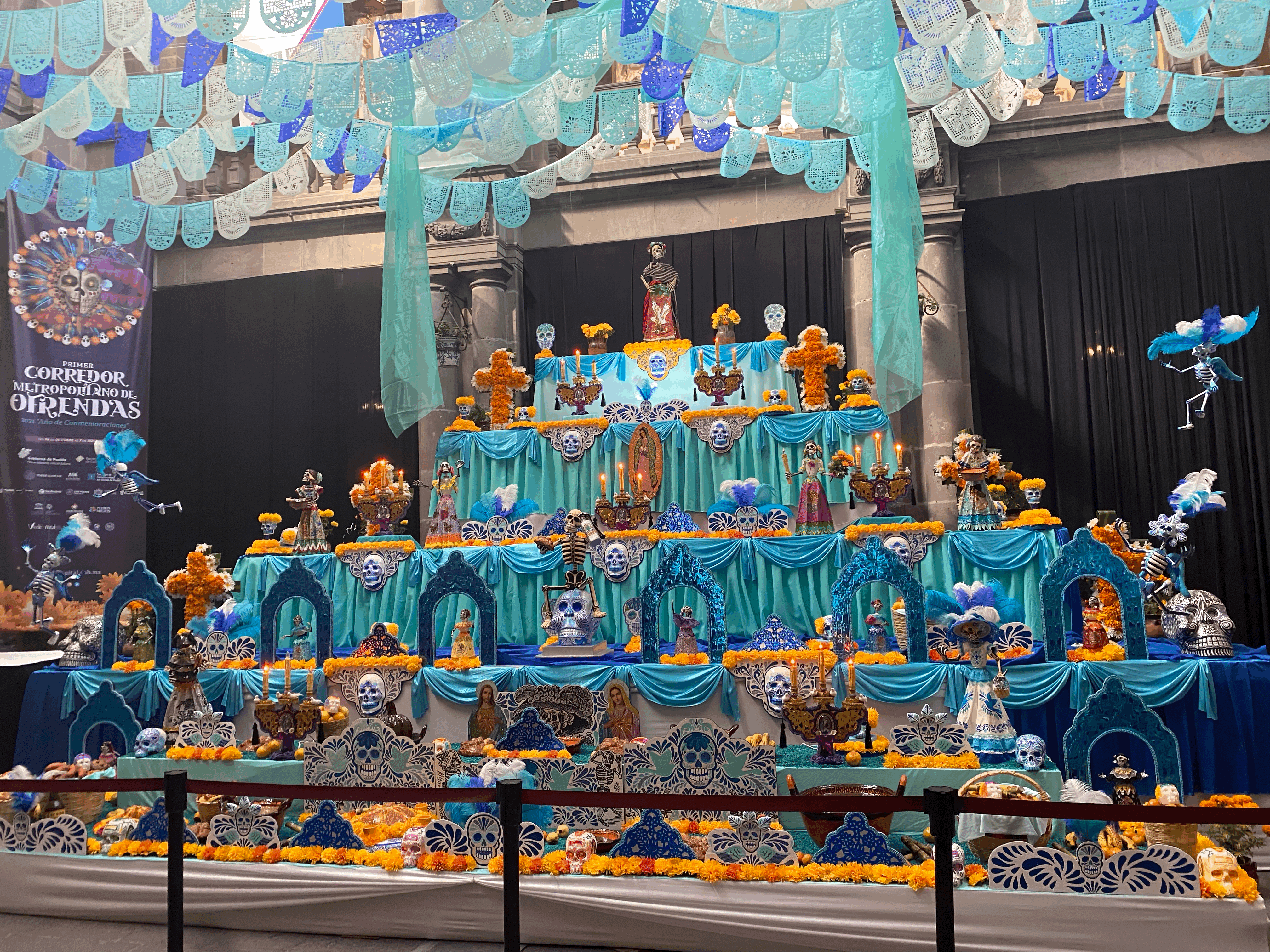
This was the offering that was much better decorated from all the ones I am going to show you, unfortunately it is decorated following the colors of the political party of the state (PAN), that is why pretty much everything is blue in different shades.
 |  |
|---|
The dish in the picture of the left is called Nogada Chile, which is one of the most iconic plates in the state of Puebla. You can find this kind of dish in almost every restaurant, but the place where they are typical and they are best serves is called Calpan. Every year there is a Nogada Chile festival that lasts around 1 month, where there is also a fair where you can try out every variety in existence of the Nogada Chile.
It is considered a seasonal dish because it is only prepared during July, August and September, due to one of the main ingredientes only being available in that time of the year, the Castilla nut.
The Xolotzcuintle is a dog breed that goes all the way back to when Mexicans were just some tribes. It is believed that they have been around for over 3 thousand years, but some researchers from UNAM, the best University in MExico, confirm that this dog is over 7 thousand years old. One of the main characteristics of this dog is that it doesn't have any hair and he is constantly 2 or 3 celsius degrees above a normal dog's temperature, which is why thousands of years ago, whenever someone got sick, a Xolo was placed on their feet while resting in bed so the sick person got better fasterly.
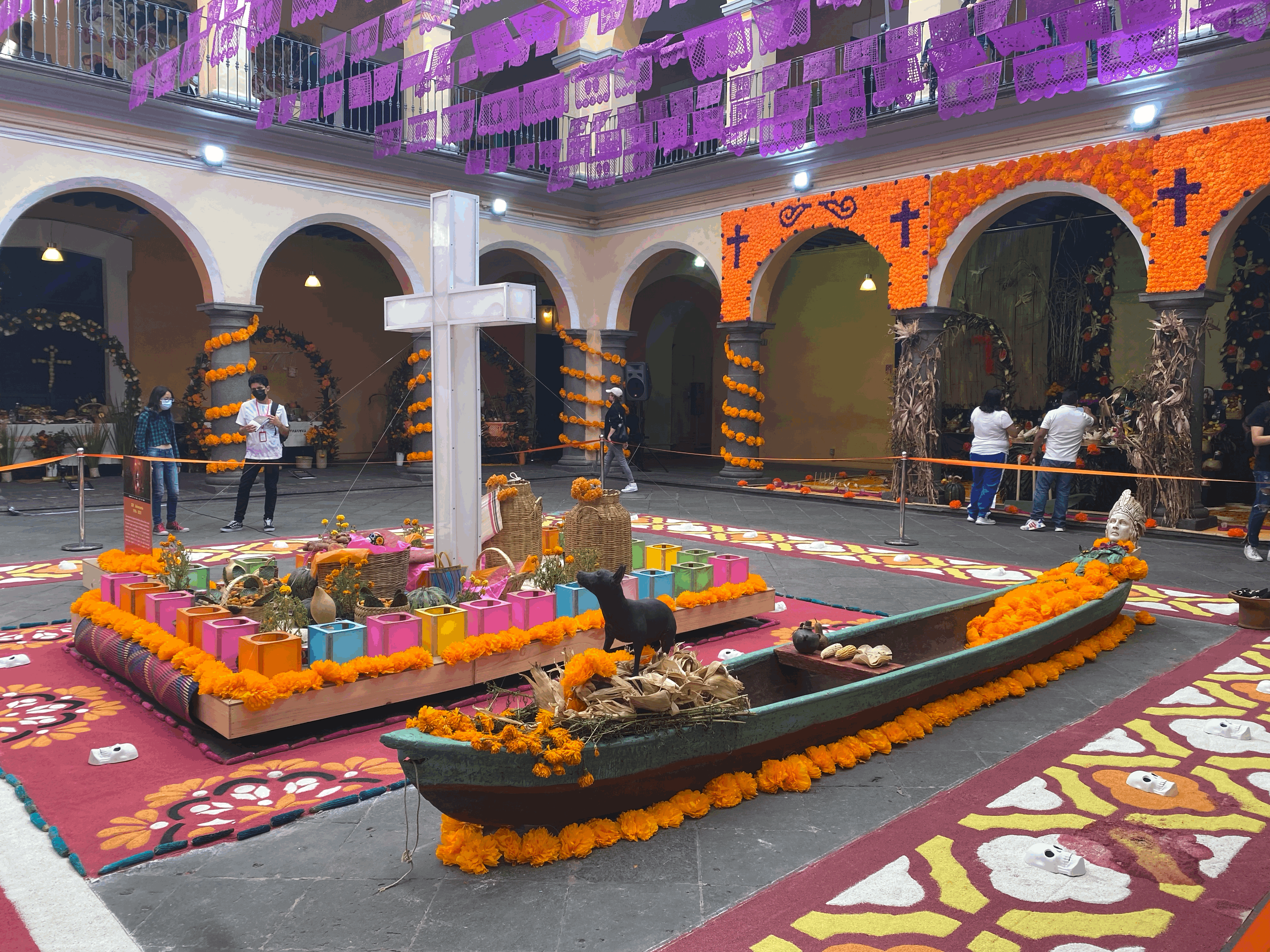
It is kind of tetric but this Xolo above in the boat is petrified and dissected.
 | 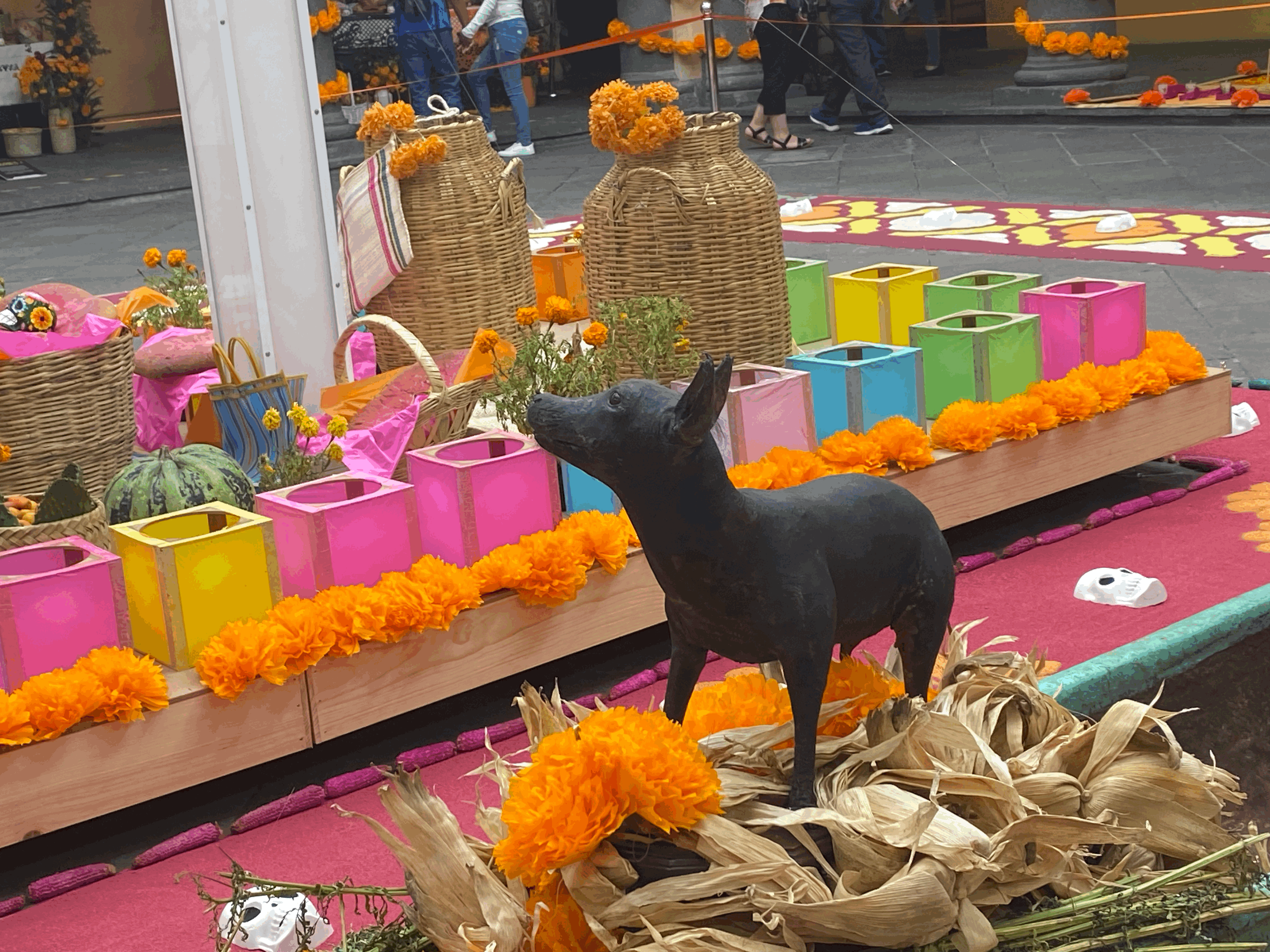 | 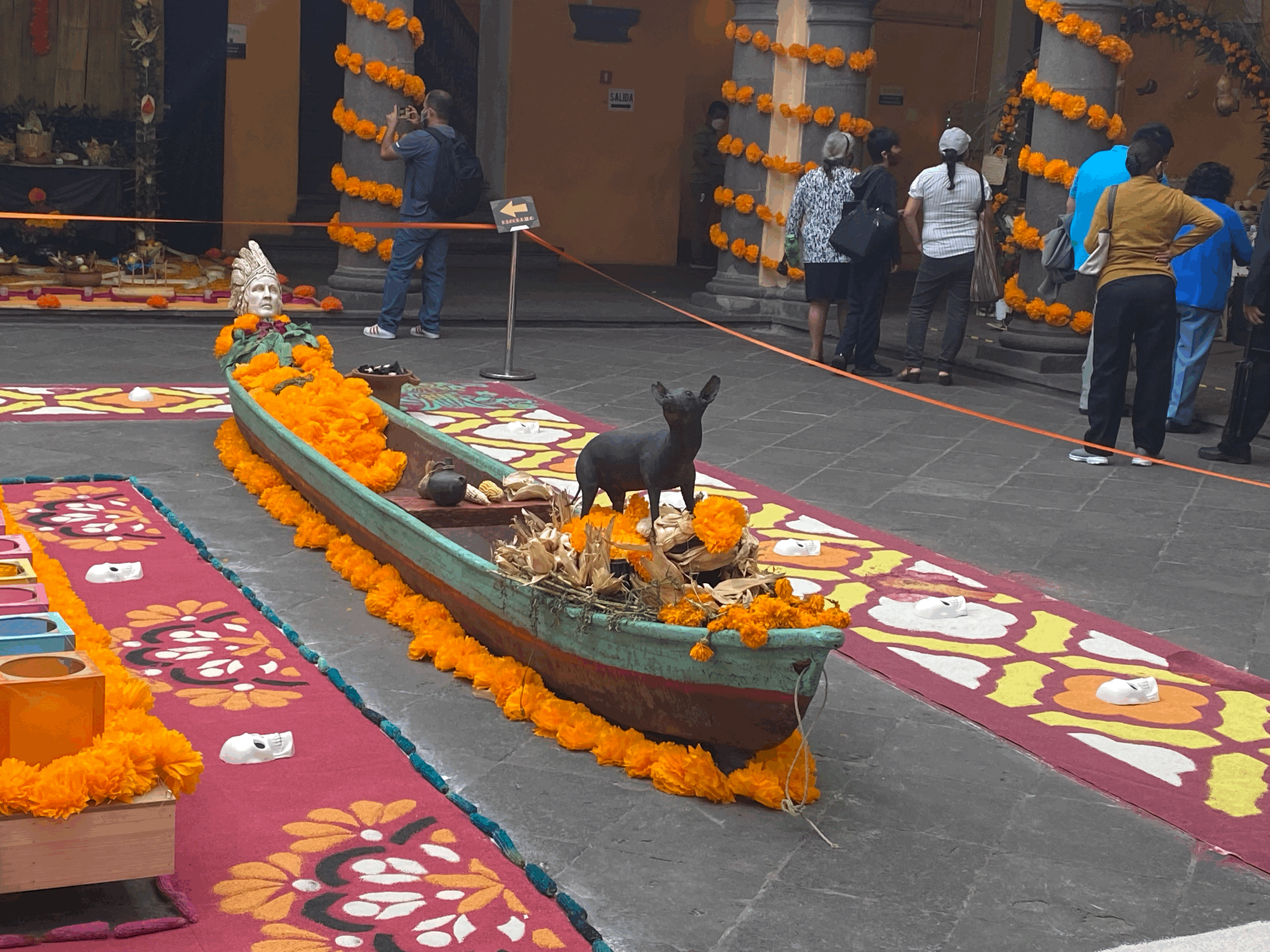 |
|---|
Around 15 years ago, the parents of a friend of mine from school called “Centro Freinet Prometeo”, gave me a Xoloescuincle. It was a very tiny Xolo because it was a half breed between Xolo and Chihuaha (that small annoying breed) and it was indeed, hairless, with only a few redhairs in the head and in the tip of her tail. She was always warm and when it was cold in my house, it was very comforting to have her close to me in bed, getting me warm. I have never had a dog with such tender and loving eyes... It is impressive how strong of a bond one can create with dogs, even with not so friendly dogs.
-This is LOLA- the female Xolo dog I had when I was young, the one in the pink weater. Next to her is Noia and in front is Kiri, both of which are still with me, more than 7 years ago.
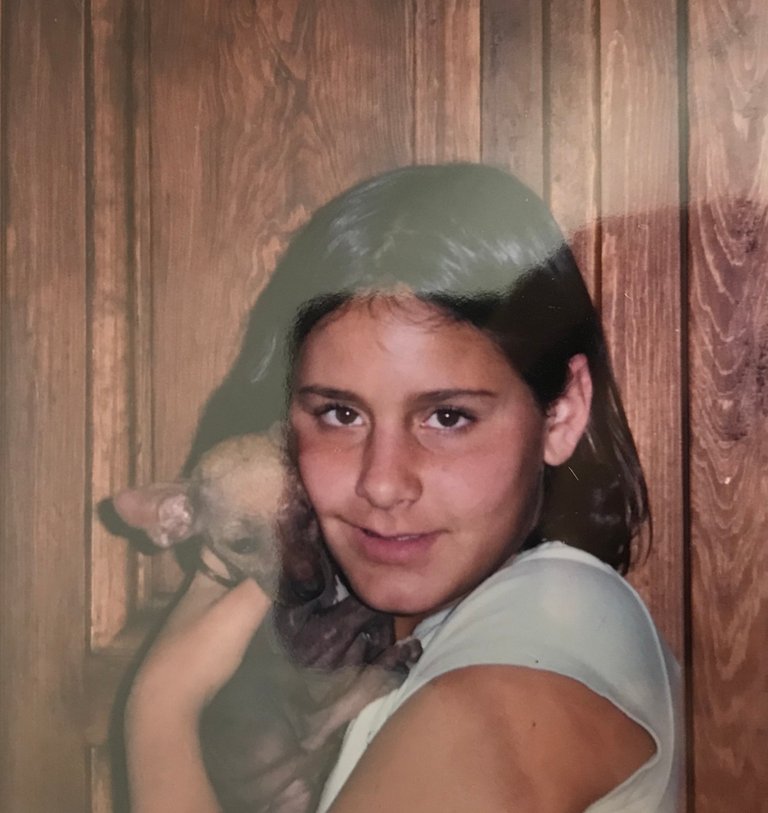 |  |
|---|
Back to the Day of the Dead topic, every year at the end of October, people start to set their offerings. People are very subjective regarding their style and type of offering they set and the decorations they include, as well as the food that put in the offering. This is because every offering depends on the story of every dead person and the one who places the offering, also because every offering holds a story, tradition, poetry and misticism. The most traditional style, and that is included in almost every offering in Mexico is:
- Pictures of Family or loved ones who are no longer here
- Bread of Dead
- Tamales
- Cempasúchil flower: It is icnluded to decorate and aromatize the place iwth her strong and nice smell. In some homes, you can find a small path delineated by petals of Cempasucil, which serve to guide the deceased into the holy field from the offering and viceversa.
- Candles: The number of candles set in an offering is important, because the light they provide is some sort of guide so that souls can arrive to their resting places, and also each candle represents one dead, meaning that the number of candles lit represents the number of people they want to receive on their offering that year.
- Coffee
- Water
- Fruit such as bananas, oranges and guava
- Salt, so that the body of the deceased doesn't corrupt on the return trip, and also to come back to the offering on next year
- Copal and incense: It is used to clean the place from bad spirits so that the souls of the loved ones can arrive to the offering with no obstacles.
- Wicker mat: So the dead can rest or also to set food or ornaments.
- Izcuintli, a toy dog, so that the souls of children are happy when they arrive
- Chopped paper to decorate and to represent the bond between life and death
- Catrinas
- Sugar and chocolate skulls
- Food, and here you can put anything, depending on what the deceased used to love eating the most (it is mostly typical mexican food).
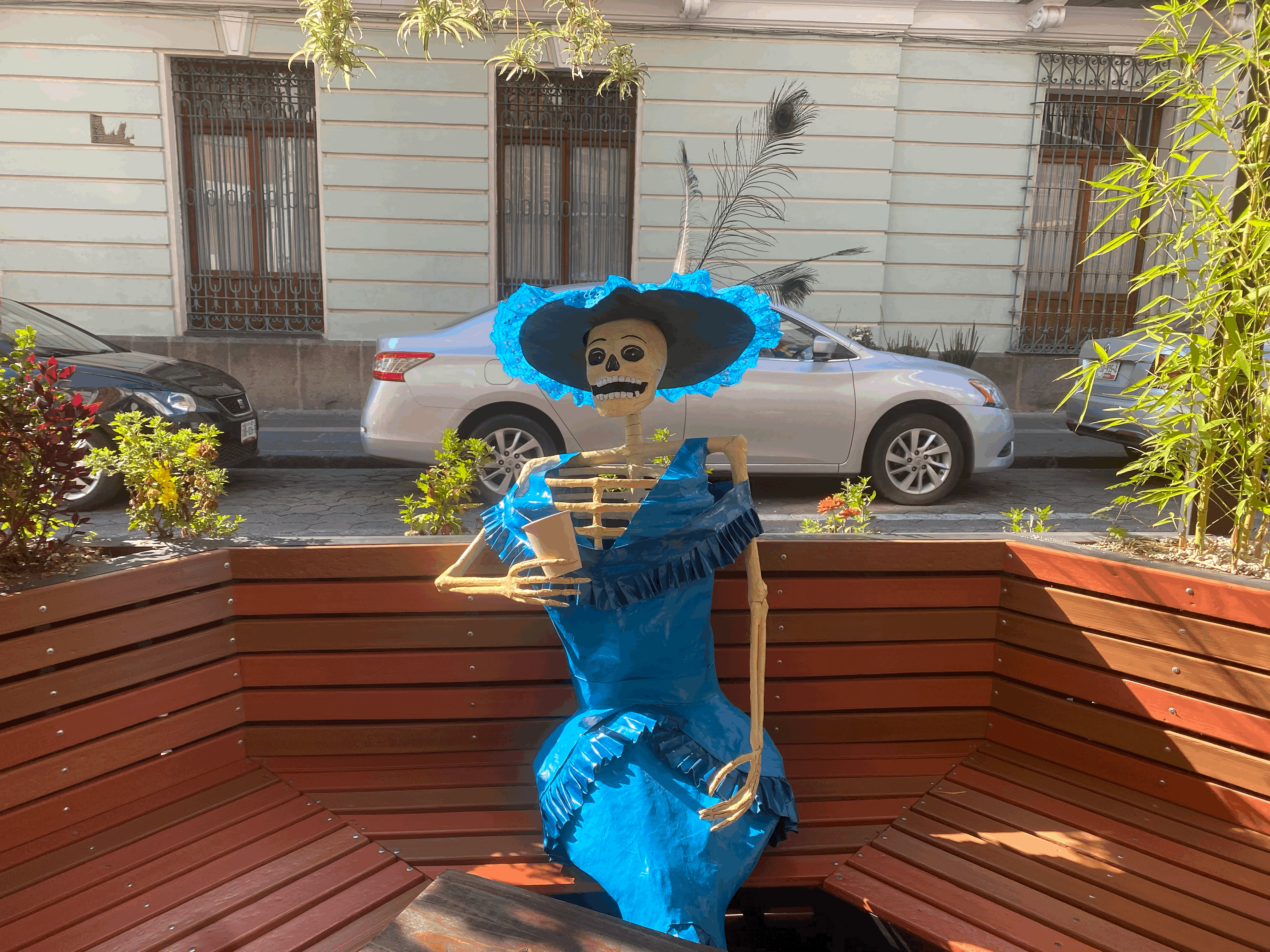
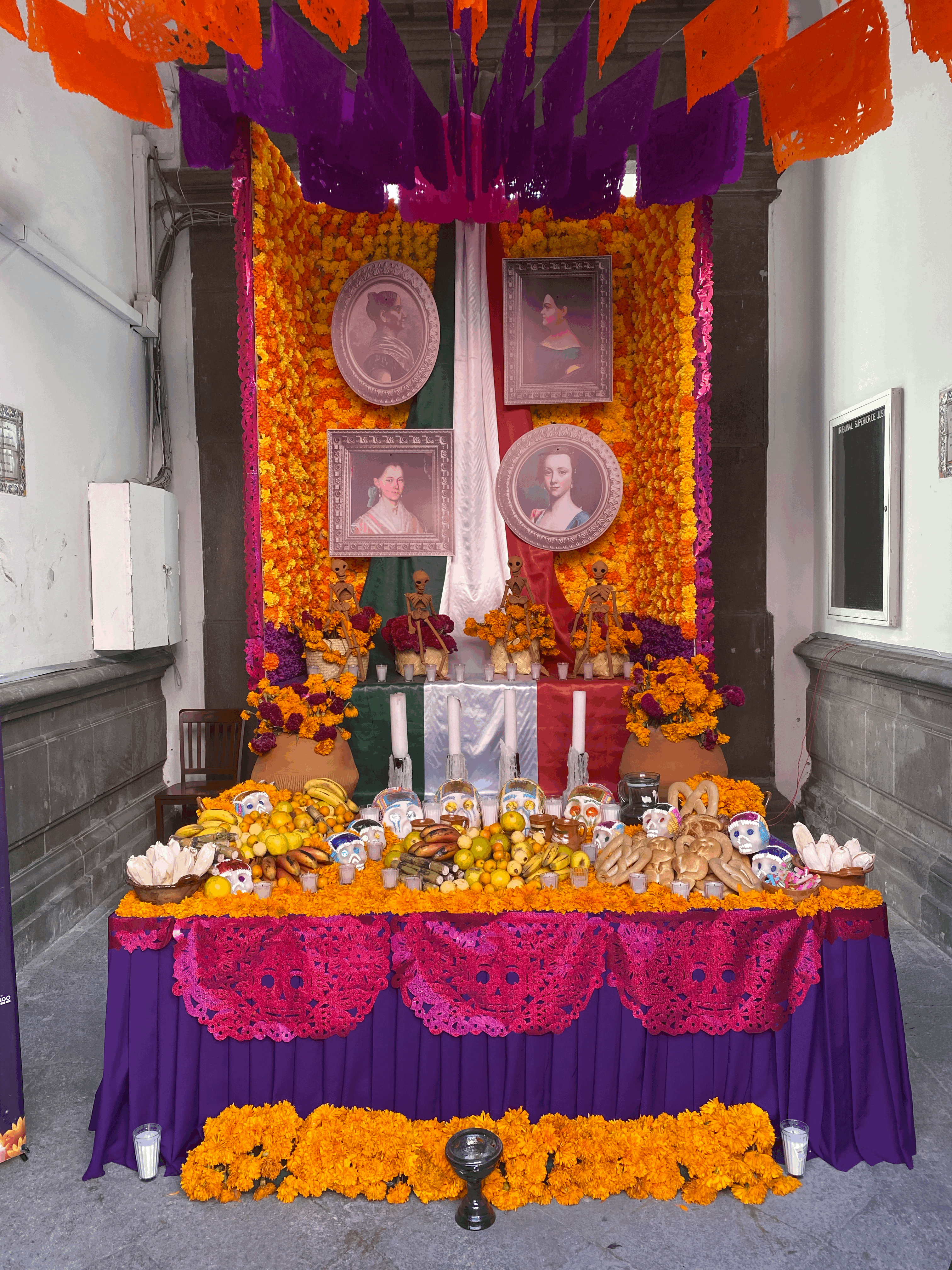 | 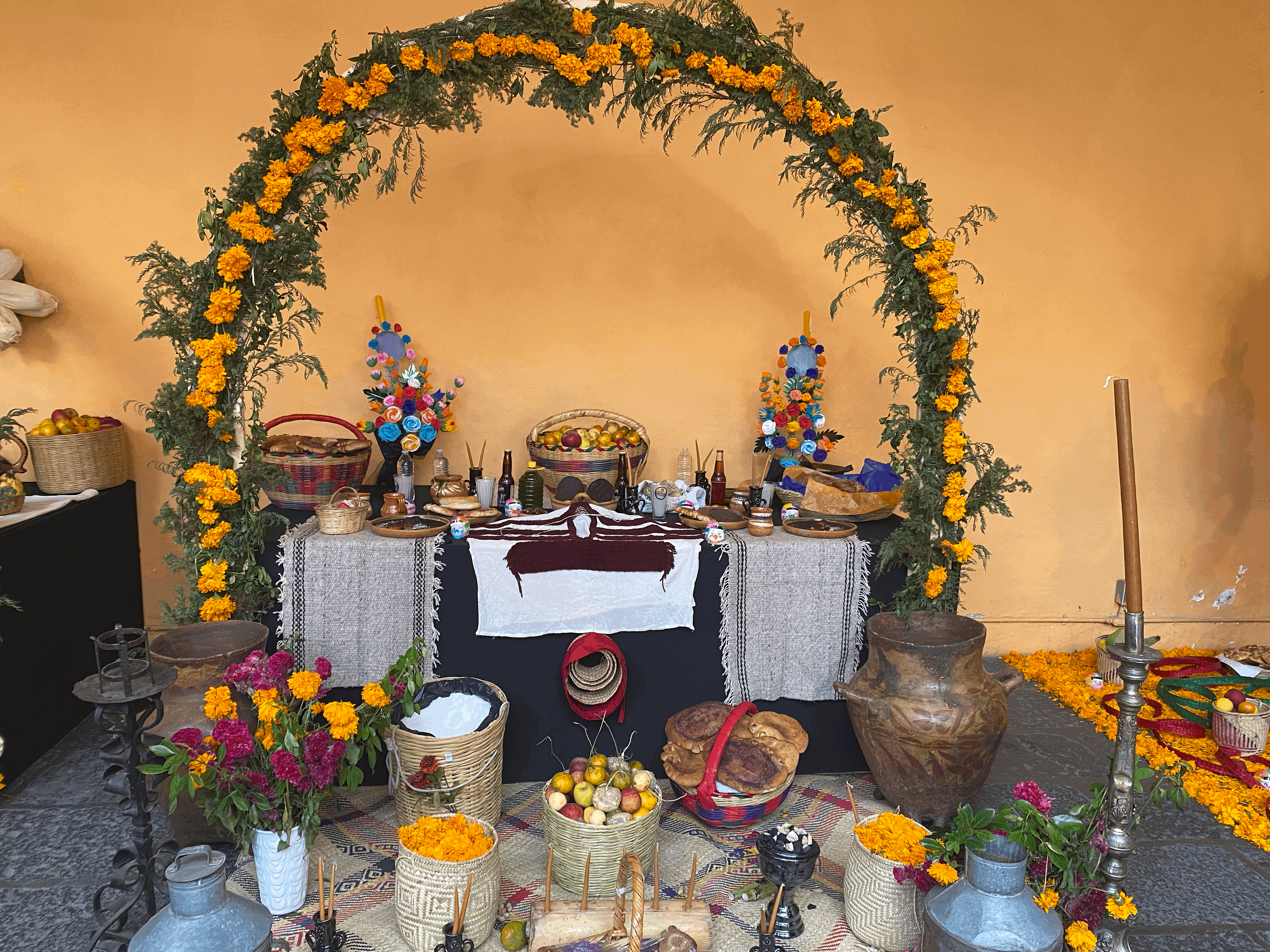 |
|---|
 | 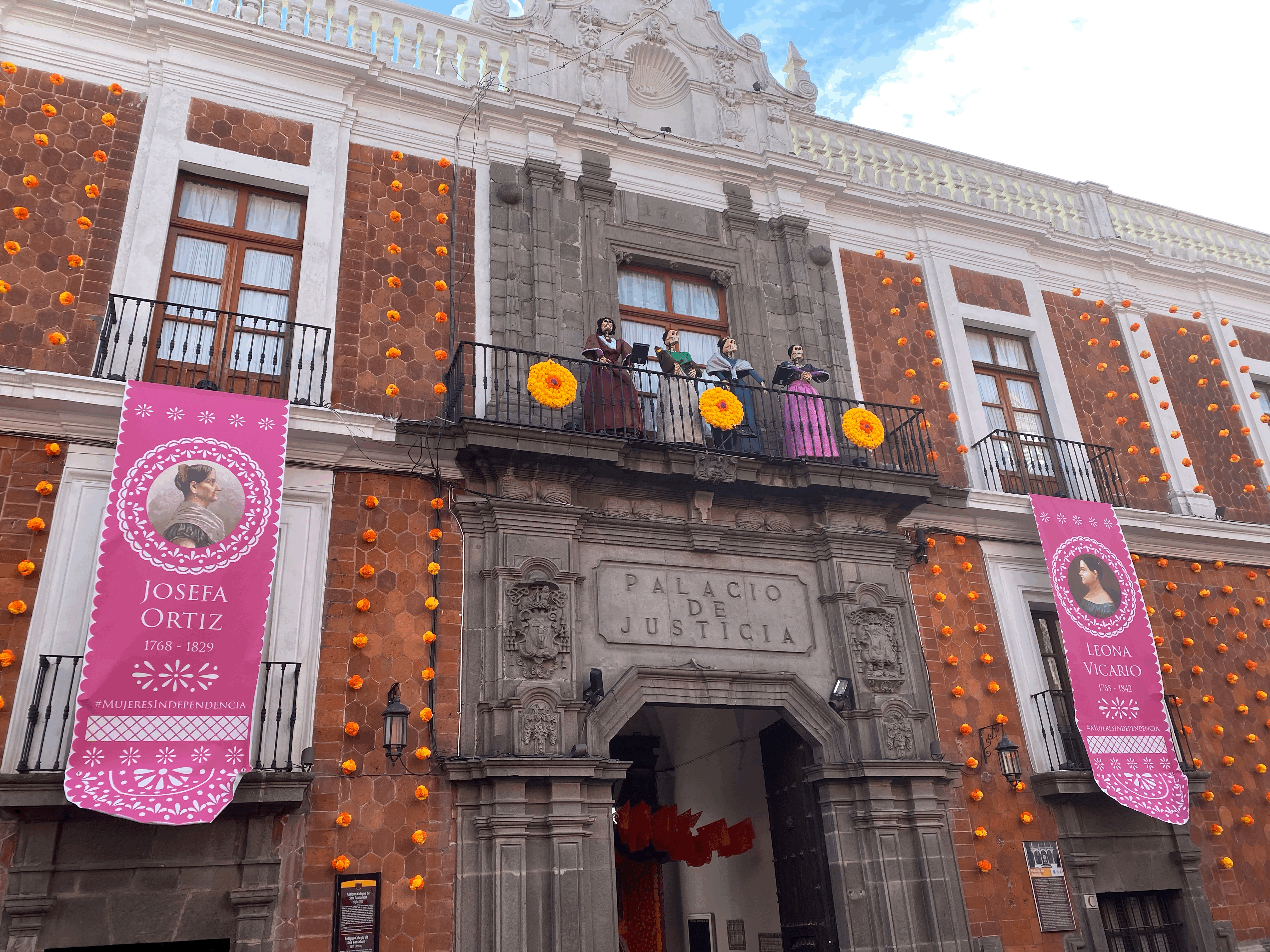 |
|---|
All the pictures I took are from different Day of the Dead offerings, which are set every year and are made by volunteers and workers alike and they are set in many parts of the state of Puebla, Cholula, and many other nearby towns.

This picture was taken in a bar called cervecería Cholula, where artisanal beer is sold, which by the way is very strong in taste and in power (getting drunk). Due to the Day of the Dead there was a huge event on this bar in which a rock band played all night and most people there were in disguise, which is a tradition during these daysl.
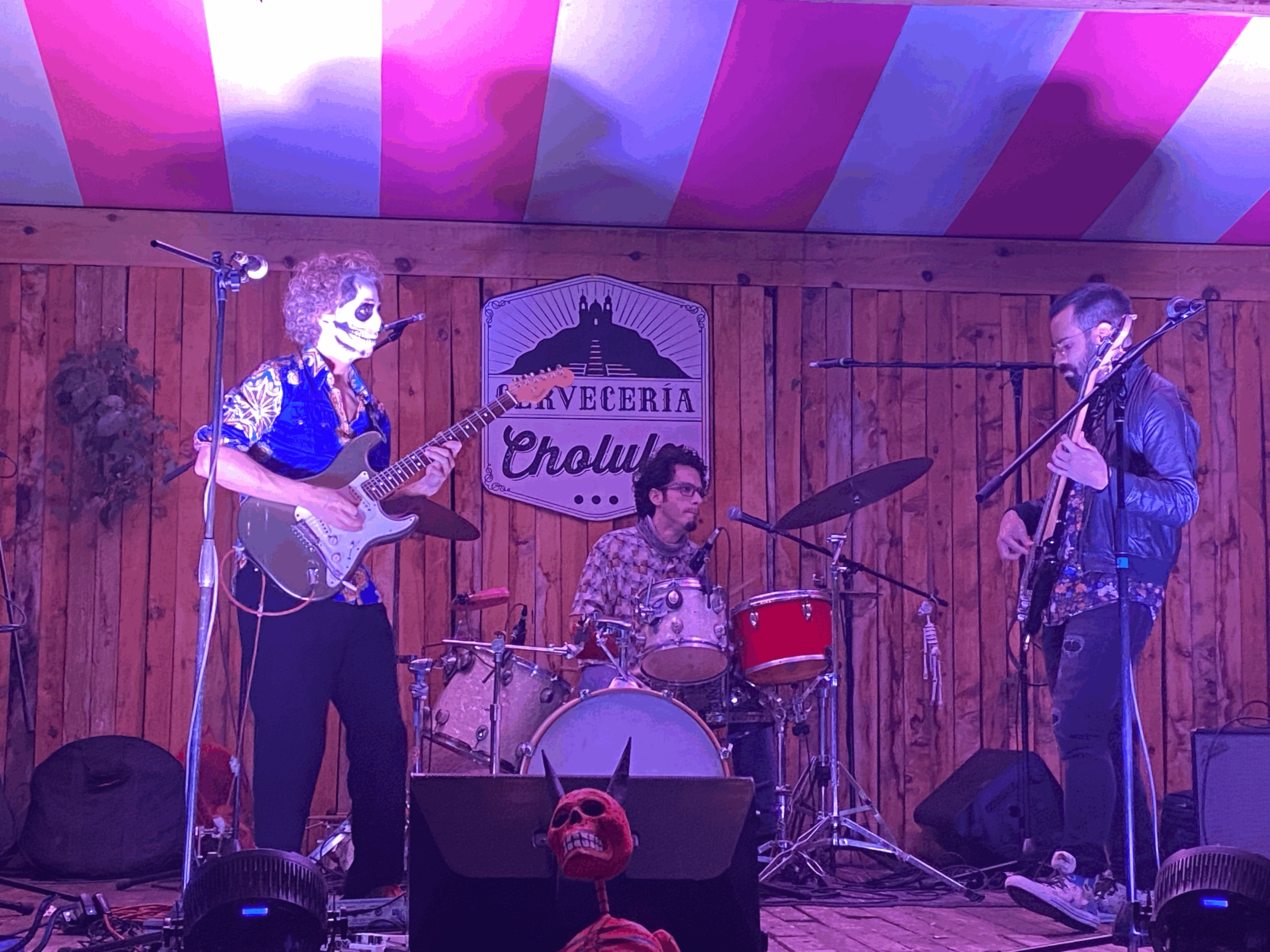 |  | 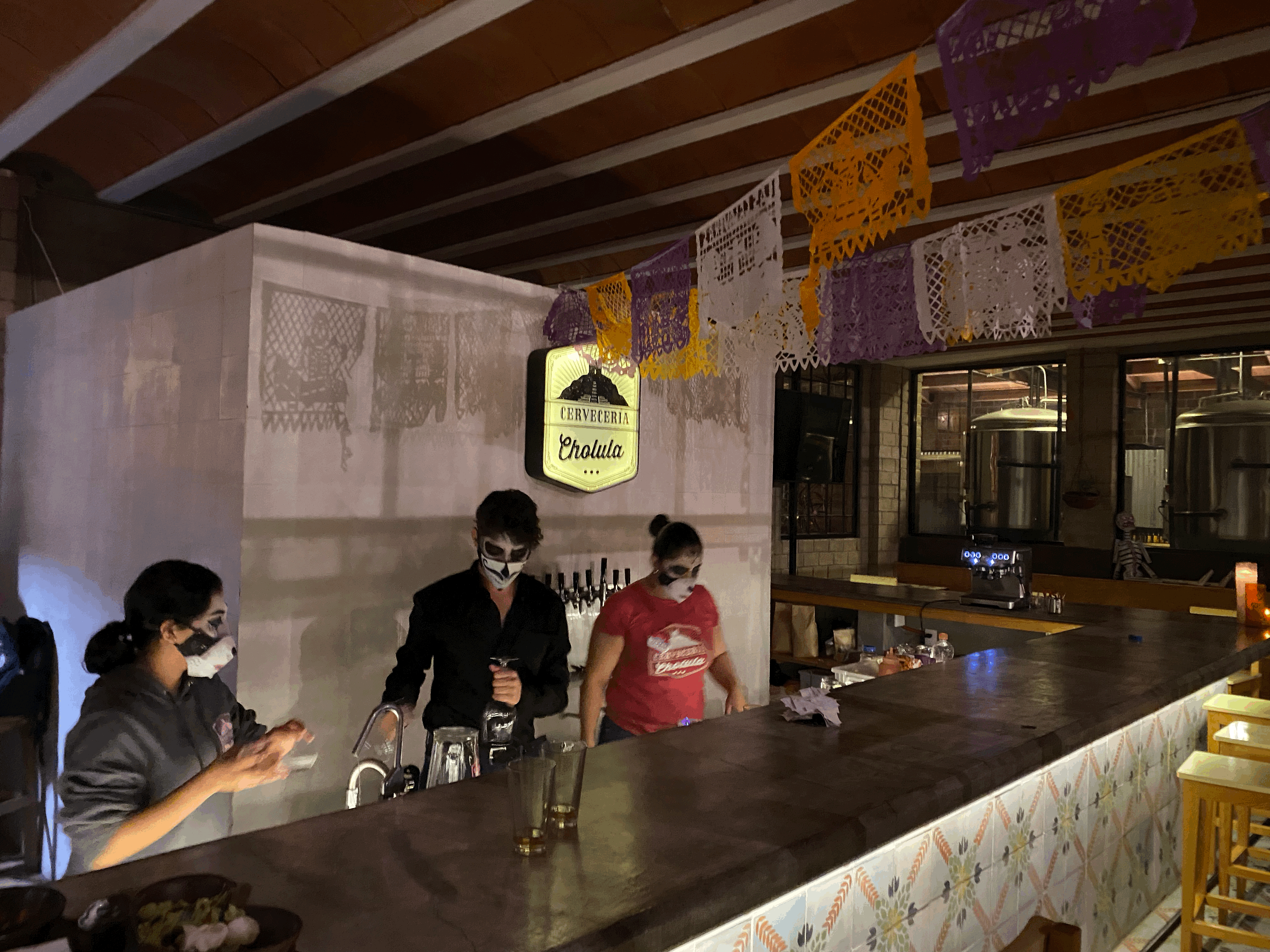 |
|---|
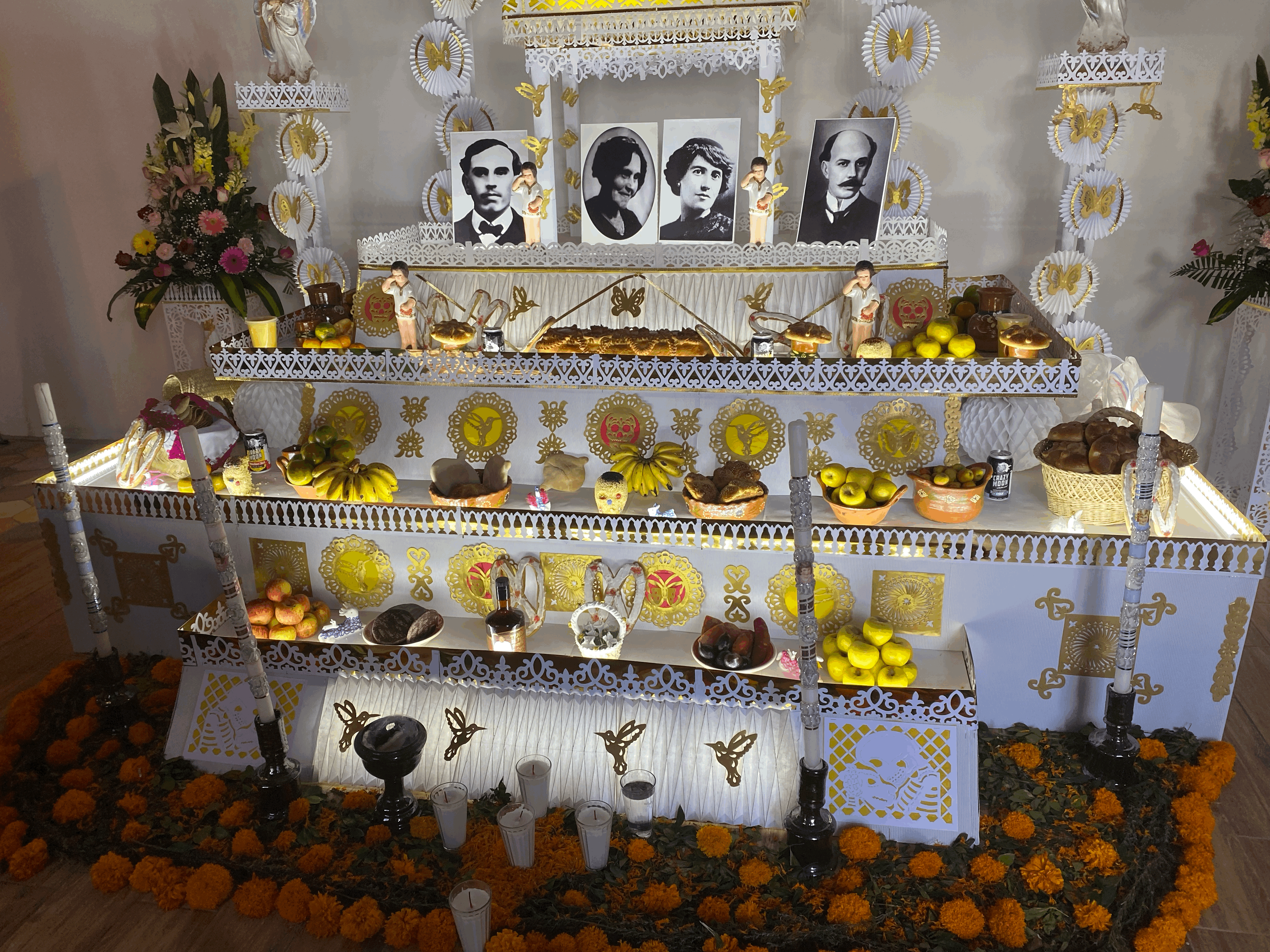
México is full of traditions, but this one is definitely one of the most beautiful ones, and the one that touches me the most. Not only inside the houses, but also on the streets, everything is decorated to go along the Day of the Dead, and even the streets hold cempasuchil petals dispersed everywhere.
Death in general but especially when it happens to out loved ones, remit to close and strong pain and sadness, which is why we try to supress the feelings and not think about it, but I believe this type of traditions and festivities dedicated to those who are no longer here, are important because they help us remember our loved ones with a smile on our face and love on our hearts; it also helps us remember our happy moments with them and to have them more present in our hearts. There is an incredible movie called COCO, where it is explained in a general way how the Day of the Dead is experienced in Mexico, if you haven't seen it you have to, this will give you a general point of view of how meaningful this day is in Mexican culture.
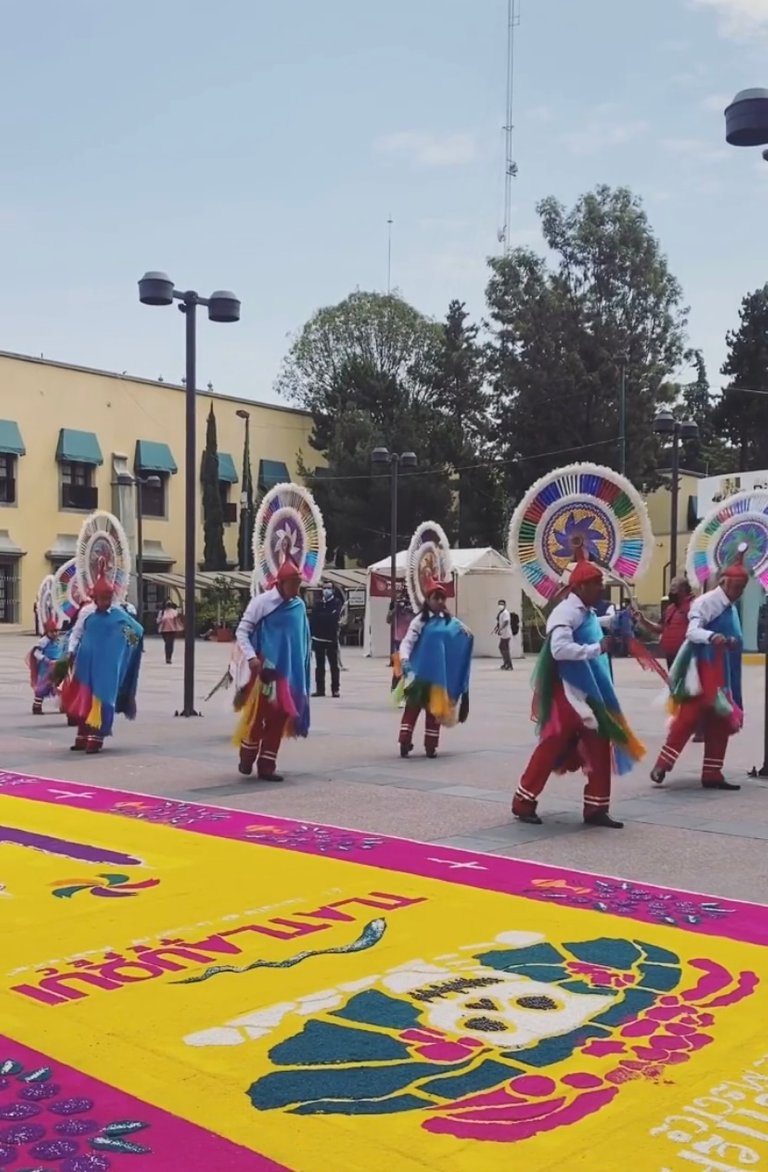
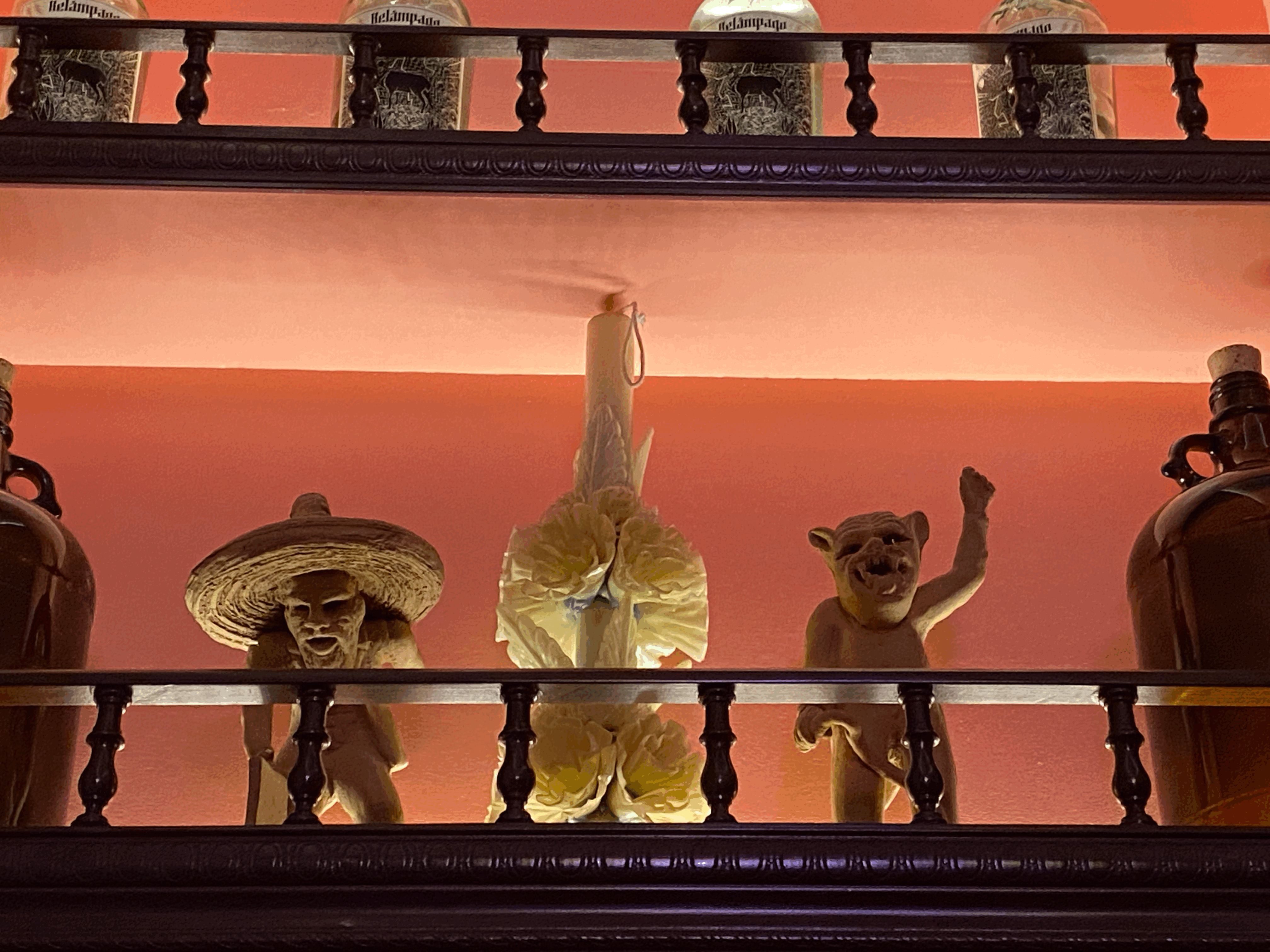 | 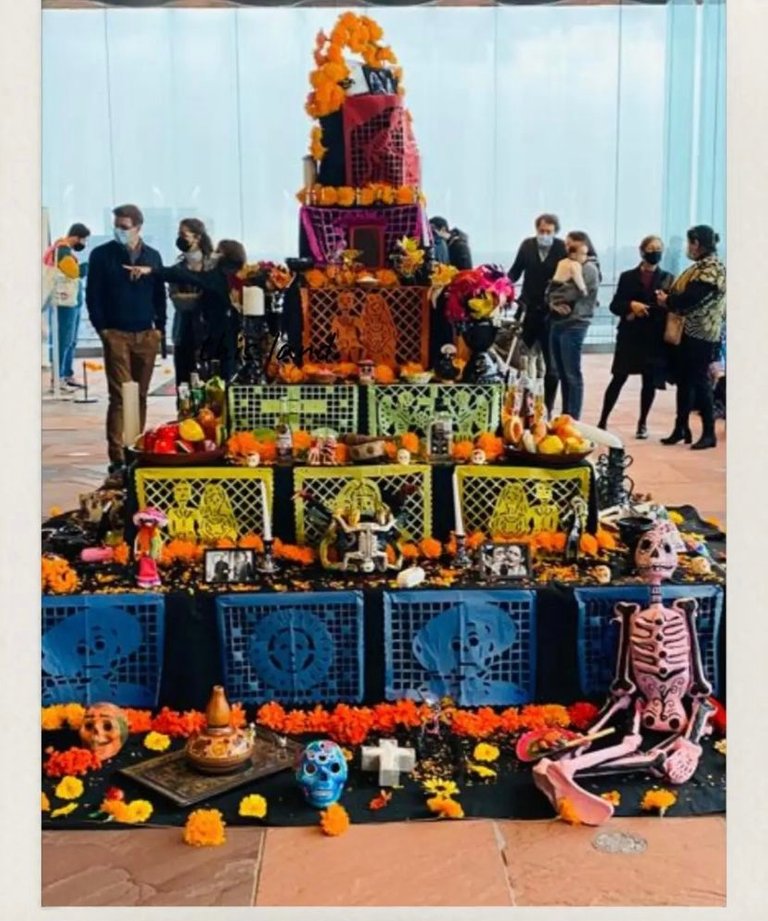 |
|---|
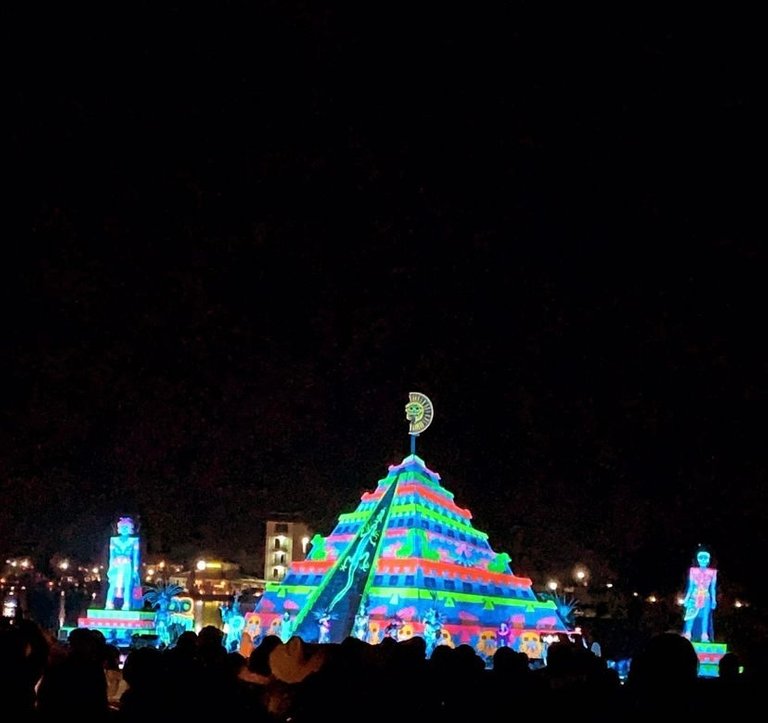
This last picture was taken by a friend and he send it to me because he knew I wanted to write about this topic. I love how much dedication and time it was put into getting the best angle and light. Look at how beautiful the pyramid is.
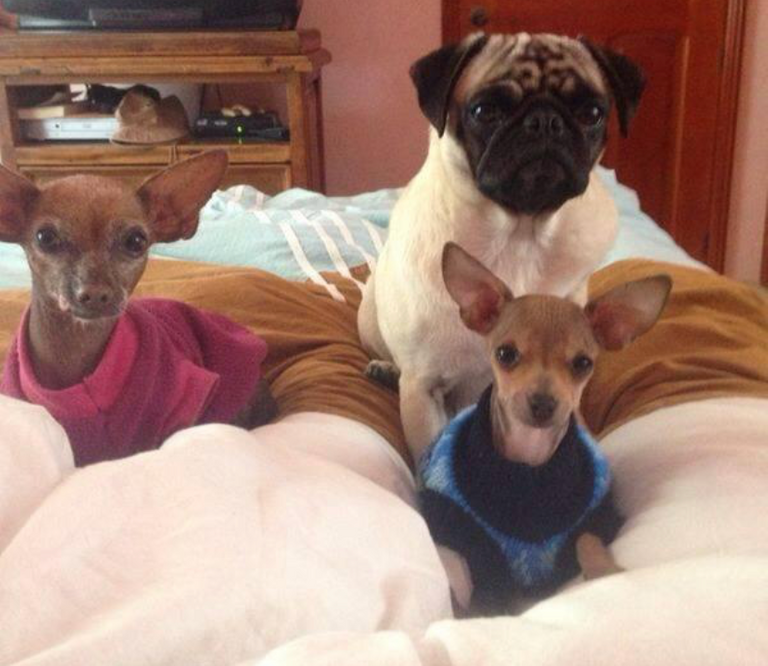
Congratulations @tanianuc! You have completed the following achievement on the Hive blockchain and have been rewarded with new badge(s):
Your next target is to reach 2500 upvotes.
You can view your badges on your board and compare yourself to others in the Ranking
If you no longer want to receive notifications, reply to this comment with the word
STOPCheck out the last post from @hivebuzz: